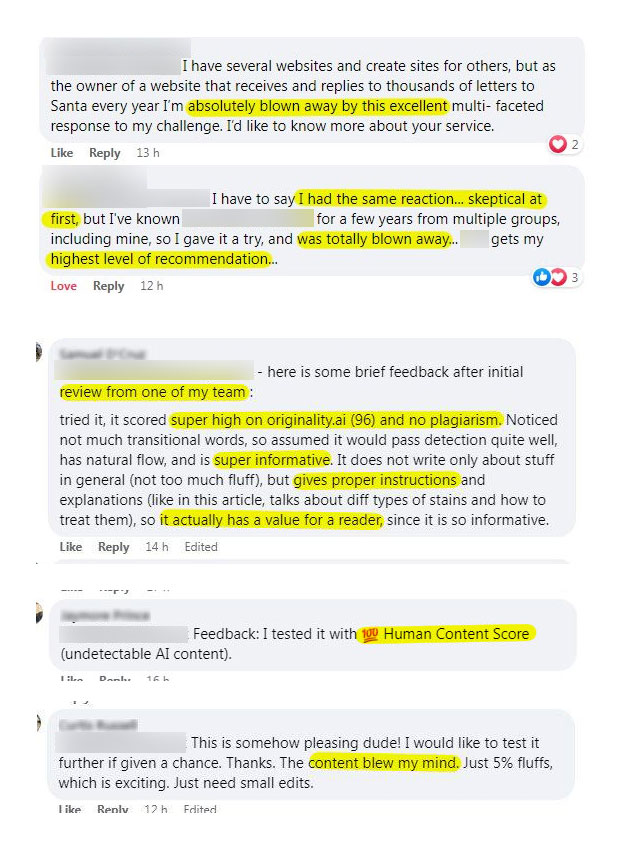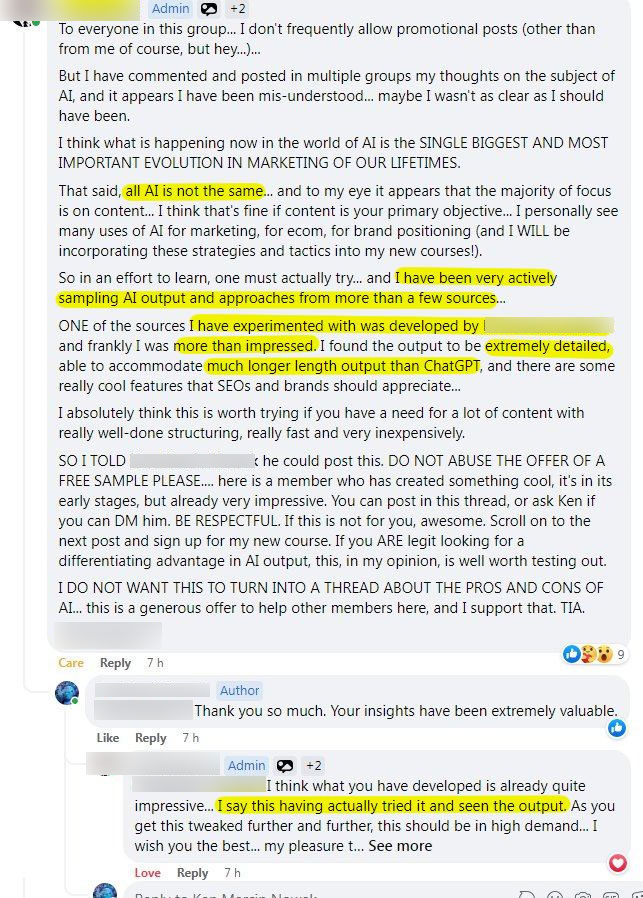Description
Based on a seed-word, we create a topical map with 700-1,000 topics that you can use in your SEO-strategy. Delivery within 24h. We can help with article creation too.
We deliver 1,000 topics. Some repetitions may exist which is why we write “700-1,000”.
Samples:
https://content.roargen.ai/category/topical-map/
Learn more:
A SEO topical map is a visual representation of how different content pieces on a website are related to each other. It’s used to help make sure that the most important pages and topics are easily accessible from anywhere on the site, as well as helping with overall search engine optimization (SEO). The idea behind it is simple: by making sure that all your webpages link together logically, you can make it easier for both search engines and visitors to find what they’re looking for quickly.
Contents:
A SEO topical map shows relationships between pages and topics within a website. It generally includes the main page with branches extending outwards towards specific subtopics or categories. Each branch may have further branches containing more detailed information about those topics. This helps users easily navigate around the site and find what they’re looking for without having to click through too many links before getting there.
One of the biggest advantages of using a SEO topical map is that it makes sure all content on your website is interconnected in some way. Search engines use this interconnectivity when indexing websites so that relevant results can be provided when someone searches for something related to your topic area – which means if you’ve created an effective SEO topical map then your chances of ranking higher in search results will also increase significantly. Creating such maps also helps ensure that any new content added will fit seamlessly into existing structures – meaning less time spent manually reorganizing things later down the line.
Creating these maps isn’t always easy though; it requires careful planning and thought into how different sections should link up together logically while keeping user experience top-of-mind throughout the process too. There are tools available online which can help simplify this task considerably – although even with these tools, creating an effective SEO topical map still takes considerable effort. This is where we can help!
Navigating SEO Content Strategies
One of the most effective ways to manage an SEO strategy is by utilizing a seo topical map. A seo topical map, also known as a keyword map, allows webmasters to identify which topics should be given priority when creating content for their sites. By providing guidance on what types of information should be prioritized, this type of tool helps webmasters make informed decisions about where they focus their efforts in terms of content creation and promotion.
Using a seo topical map can help guide the navigation between various topics related to an overall SEO strategy. This approach allows website owners to ensure that they are consistently producing relevant material while ensuring that each page or post contains keywords and phrases pertinent to its respective topic area. By having a clear structure in place with regards to different elements such as titles, headings and meta tags, it becomes easier for search engines such as Google or Bing to index pages correctly so that users find them more easily during searches online.
Being able to navigate through different topics makes it easier for writers and editors who are tasked with producing high-quality content within specific parameters set out by the webmaster’s SEO plan. Having access to resources like keyword research tools helps provide insight into what kind of language people use when searching online – meaning that authors can create copy tailored towards targeted audiences rather than general users who may not be interested in buying products or services from any given site owner’s business model.
Unlocking SEO Potential
By mapping out keywords and understanding their relationships, businesses can ensure that their webpages are optimized for maximum visibility on Google and other search engines.
The first step in unlocking your website’s SEO potential with a topical map is by researching relevant keywords. Keywords should be carefully selected based on relevancy, competition level, search volume and other factors that will help determine whether or not they will generate traffic for your website. Once you have identified the best keywords for optimization purposes, you can then begin building your map by creating connections between related terms as well as groups of words which form topics around those terms.
When all the pieces are put together into one cohesive strategy you’ll be able to see how each keyword relates to others within the same topic area – allowing you to create targeted campaigns that accurately target the right people at the right time. With this knowledge in hand businesses can focus their efforts more effectively while also ensuring that they don’t waste time targeting irrelevant audiences or wasting resources trying to get noticed by users who aren’t looking for what they offer. This way everyone wins – both consumers and business owners alike.
Mapping Out Keywords
A SEO topical map can help identify which words are important to include on each page and in what order, so that search engines will be able to find it more easily. By understanding how a site’s content relates to its target audience, marketers can develop more accurate keyword strategies and create better user experiences.
The process of creating a topical map begins by researching relevant keywords related to the business’s products or services. Once those terms have been identified, they should be placed into categories based on their relevance and importance. These categories may include topics such as customer service, product reviews, company history or even industry news stories. This will give marketers insight into which pages need additional optimization efforts in order to rank higher in search engine results pages (SERPs).
Once the SEO topics have been organized into groups, then links between them should be created according to their relevance within each group or topic cluster. This helps keep track of which terms should be included on each page for maximum visibility and ranking potential. Link building tactics can also be used within these clusters for further optimization opportunities that help bring targeted traffic back to the website itself over time.
Getting the Most out of Search Engines
Search engine optimization (SEO) is a key factor in the success of any website. It can be challenging to keep up with the ever-evolving algorithms and guidelines for optimizing content, but having an SEO topical map can make it easier. A topical map helps to ensure that your webpages are organized in such a way as to get maximum visibility on search engines like Google or Bing. This means targeting specific topics, creating content around them, and making sure they are optimized correctly.
Using keywords strategically is one way to increase organic traffic from search engine users. When done properly, this will help you rank higher on SERPs and improve overall website performance. The SEO topical map provides guidance on which terms should be used when creating content related to each topic so that you can get the most out of search engine results pages (SERPs). With this type of mapping, you’ll know exactly which keywords should be used where for maximum impact and visibility. Using a topical map allows for quick changes if necessary due to changing trends or regulations within the industry – something that would otherwise take much longer without such a tool at your disposal.
Having an SEO topical map also enables you to stay ahead of competitors by analyzing their strategies and implementing similar tactics yourself. Knowing what works well for others gives you insight into how best optimize your own website’s content; this ensures it stands out amongst rivals while still adhering to industry standards set by popular search engines like Google or Bing. You can even use keyword analysis tools provided through these services in order gain insights into how well certain phrases are performing across various industries – giving you an advantage when creating new topics related specifically tailored towards your target audience’s needs.
Making Your Website Visible
Making a website visible is essential for getting the right traffic and being able to grow your online presence. A SEO topical map can be an invaluable tool in this regard. It provides a comprehensive overview of the topics related to your site, giving you insight into what people are looking for when they search online.
The map will show you which keywords and phrases are most likely to appear in searches related to your content, so that you can optimize them accordingly. This will ensure that visitors find exactly what they’re looking for when searching on Google or other search engines, increasing the likelihood of them staying on your page longer and ultimately converting into customers. By understanding how users interact with each other via comments or social media posts about particular topics, you can better tailor content towards their interests.
Having a clear understanding of how various webpages relate to one another helps keep track of who is linking back to whom; this makes it easier for people who stumble upon your site through external sources (such as referral links)to navigate around easily and find more relevant information quickly – thus improving user experience overall.
Exploring Relevant Resources
When it comes to SEO, one of the most important things is finding relevant resources. A topical map can help you achieve this goal by providing an organized way to explore and identify related topics that are pertinent to your website.
A topical map allows you to easily view how various topics relate to each other and which ones might be useful for your website content strategy. It also helps you discover new resources that may not have been considered previously. For example, if you’re writing about a certain topic, a topical map could show related keywords or phrases associated with that subject matter which could then lead you down avenues of further research. By exploring these related topics through a topically mapped approach, it’s easier to find valuable information quickly and efficiently without having wasted time on irrelevant material.
Using a topical map provides insights into what kind of content resonates best with audiences in different contexts and industries. Knowing this information beforehand can save considerable time during the planning process as well as ensure better-quality content creation throughout the development cycle – ultimately leading towards more successful campaigns down the line.
Optimizing Results with a Topic Map
A SEO topical map can be an invaluable tool for optimizing search engine results. It is a visual representation of how various topics and related keywords are interconnected, making it easier to determine which words should be used in order to get the most favorable ranking on search engines. This type of mapping makes it possible to identify which terms will bring the best organic traffic when incorporated into web content.
Using a topic map helps create more effective keyword strategies that make sure all relevant topics are included in website content while avoiding using too many irrelevant or duplicate phrases. The map also helps identify any gaps between what searchers expect and what your website actually offers them, enabling you to fill those voids with appropriate keywords or links that lead users towards pages where they’ll find the information they seek.
Creating a good topic map requires careful analysis of both existing website content as well as competitor websites and research on trending topics within specific industries or locations. Analyzing these factors gives insight into what people are searching for, allowing you to craft titles, descriptions, headings and other elements accordingly so that your page gets better visibility than others vying for similar rankings on SERPs (search engine result pages).
Gaining Competitive Edge with Topical Mapping
Using a topical map to create content and optimize websites can be an effective way to gain an edge over the competition. By better understanding the market and how your target audience is searching, you can build a stronger online presence that resonates with customers. With topical mapping, businesses are able to quickly analyze keywords related to their industry, product or service offerings in order to generate content that speaks directly to customer needs.
Businesses can use this data-driven approach for search engine optimization (SEO). Topic maps provide insights into popular topics of interest within any given niche as well as keyword phrases used by searchers. This information allows companies to craft more relevant webpages and blogs while targeting specific audiences in order to boost organic traffic from search engines like Google and Bing. Knowing what people are talking about within the industry gives companies insight into how they should communicate with potential buyers via social media platforms such as Twitter or Facebook.
Topic mapping also serves another purpose – it helps brands identify areas where there is less competition so they may capitalize on these opportunities before others do. Companies can research which topics have few competitors but large amounts of searches each month in order find unique ways of generating leads without having too much difficulty ranking high in SERPs (Search Engine Results Pages). This type of analysis enables organizations discover overlooked niches within their markets that could potentially turn out lucrative profits down the line if developed correctly from both SEO and marketing perspectives.




Reviews
There are no reviews yet.